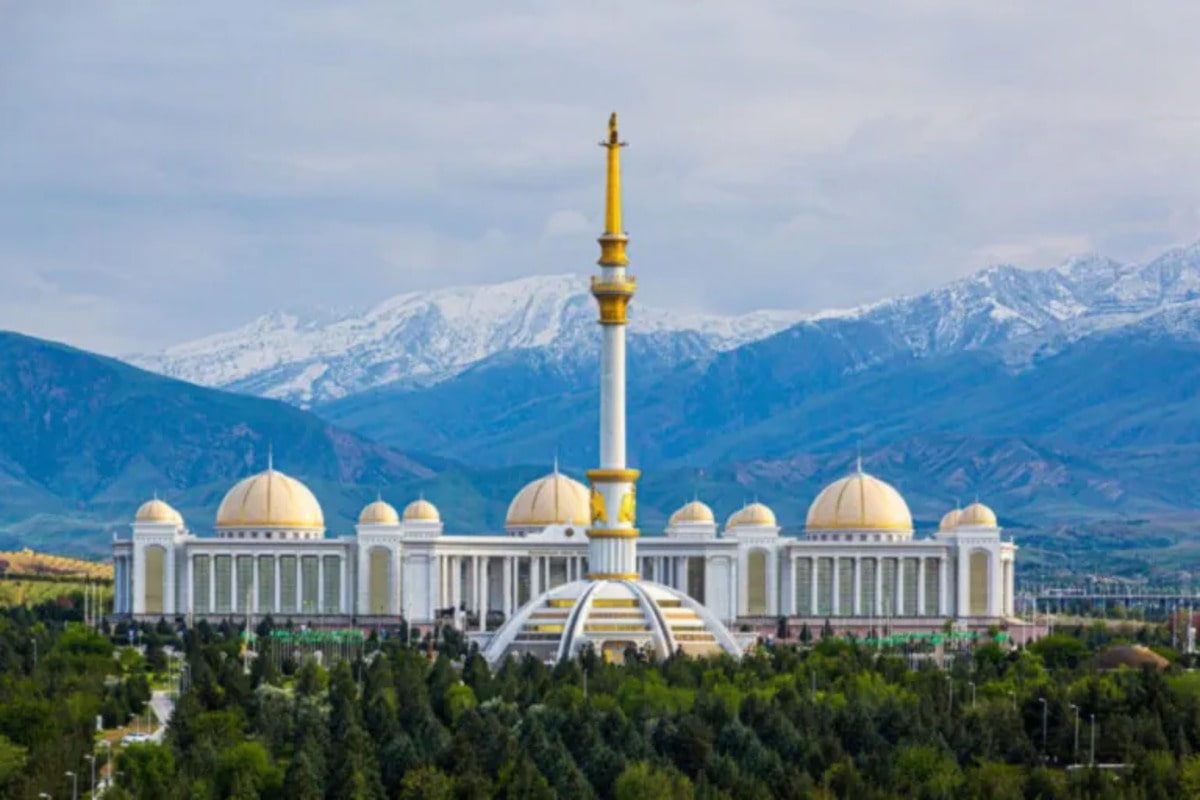Turkmenistan is one of the most mysterious countries in Central Asia, combining ancient history, unique traditions and ambitious modern architecture. Despite its vast territory and rich natural resources, the country remains largely unknown to many tourists and researchers. It is a land where endless deserts, marble-covered cities and a nomadic spirit coexist in a striking harmony. Turkmenistan often surprises visitors with its contrasts and paradoxes. Here are some fascinating facts about Turkmenistan that you may not have known.
- The capital city of Turkmenistan, Ashgabat, has been recognized by the Guinness World Records as the city with the highest concentration of white marble buildings. Almost all major structures in the city are clad in white marble, giving it a shining and monumental appearance. The city features numerous monuments, arches and fountains, many of which are dedicated to former presidents. Ashgabat’s architecture blends modern style with elements of Eastern grandeur.
- Turkmenistan is home to one of the most remarkable natural phenomena in the world – the Darvaza gas crater, also known as the Door to Hell. This enormous crater, more than 60 meters in diameter, has been burning continuously since 1971. The fire creates a haunting glow at night, attracting tourists from all over the world. It has become an unofficial symbol of the country’s vast energy resources.
- Turkmenistan holds some of the world’s largest reserves of natural gas. Gas exports form the backbone of the national economy. For many years, basic utilities such as gas, water and electricity were provided to citizens either for free or at extremely low cost. This system was a rare example of large-scale energy subsidies in practice.
- Over 80 percent of Turkmenistan’s territory is covered by the Karakum Desert. It is one of the largest sandy deserts in the world, stretching across most of the country. While sparsely populated, this region is rich in oil and gas deposits. Advanced irrigation systems, including the famous Karakum Canal, make it possible to support agriculture in such an arid environment.
- The Karakum Canal is one of the longest man-made canals in the world. It stretches over 1300 kilometers and serves as a crucial water source for agriculture. The canal diverts water from the Amu Darya River to central regions of the country. Its construction transformed the landscape and allowed for the development of farming in desert areas.
- Turkmens, the main ethnic group in the country, have a rich nomadic heritage that is reflected in their customs, music, crafts and traditional dress. One of the most iconic elements of Turkmen culture is the Turkmen carpet, considered among the finest in the world. Each carpet carries unique patterns that tell the story of a particular tribe. These carpets are even displayed in government buildings as symbols of national pride.
- Turkmenistan officially operates with only one mobile service provider – the state-run company Altyn Asyr. Internet access is heavily restricted, and many popular websites are blocked. This is part of a broader policy of information isolation, designed to maintain control over the media environment. Citizens often rely on VPN services to access global internet content.
- Turkmenistan is one of the least-visited countries in the world due to its strict visa policies. Obtaining a tourist visa requires an invitation from a licensed tour agency and strict adherence to a pre-approved itinerary. Foreign visitors are typically accompanied by guides throughout their stay. Those who have traveled there, however, often speak of the hospitality of locals and the uniqueness of the experience.
- Turkmenistan officially celebrates Melon Day, dedicated to special varieties of sweet melons cultivated in the country. The holiday takes place in August and includes exhibitions, tastings and performances. The melon is regarded as a national fruit and a symbol of fertility. Turkmens proudly promote their fragrant and juicy produce on international stages.
- The Akhal-Teke horse is a national symbol of Turkmenistan and is often called the most beautiful horse in the world. These horses are known for their glossy coats, slender build and remarkable endurance. They are held in high regard with festivals, monuments and even coins dedicated to them. The Akhal-Teke horse represents strength, dignity and the spirit of the Turkmen people.
- Ashgabat is home to one of the tallest flagpoles in Asia, standing over 130 meters high. It flies a massive Turkmenistan national flag that is visible from miles away. This structure symbolizes the country’s sovereignty and pride. Nearby are key government buildings and monumental architectural complexes.
- While Turkmenistan is officially a republic, in practice it functions as an authoritarian state. The president wields nearly unlimited power, and the cult of personality surrounding past leaders was highly developed. Statues, portraits and quotations of former presidents are common on streets, in schools and in public buildings. This contributes to a distinctive political and cultural atmosphere.
These incredible facts about Turkmenistan reveal a country where ancient heritage, natural wealth and modern-day isolation coexist. Though still largely unknown to the outside world, Turkmenistan offers unique insights into culture, geography and national identity. It impresses with its contrasts, traditions and authenticity. Exploring Turkmenistan allows for a deeper understanding of Central Asia’s rich diversity.





